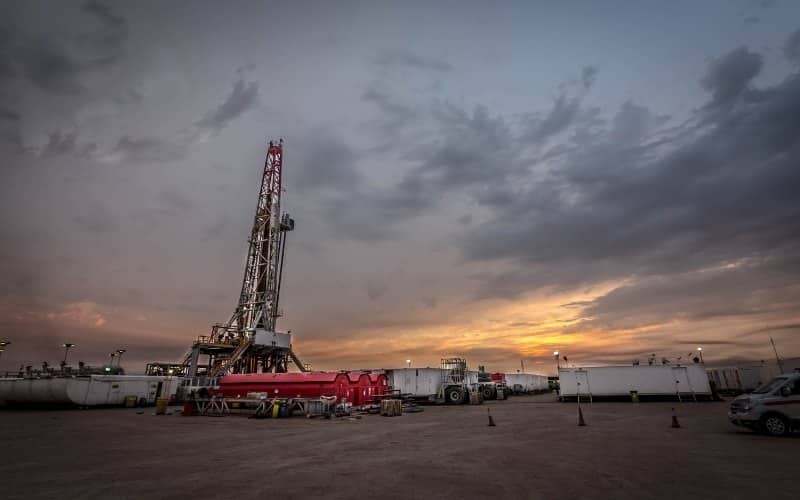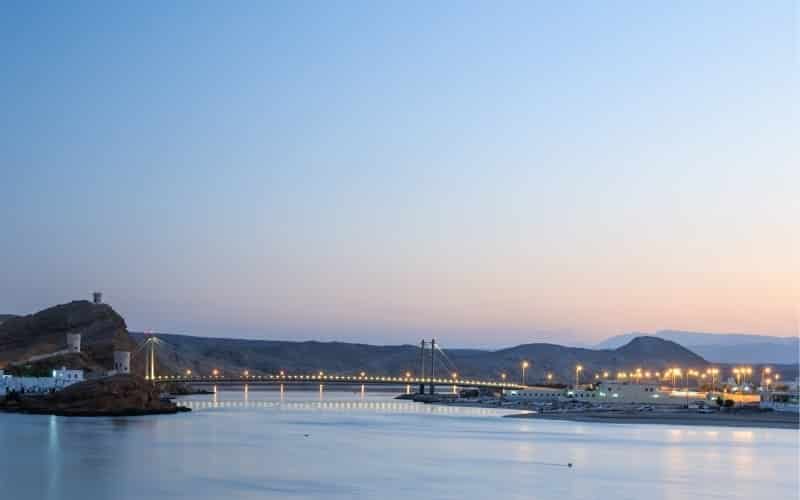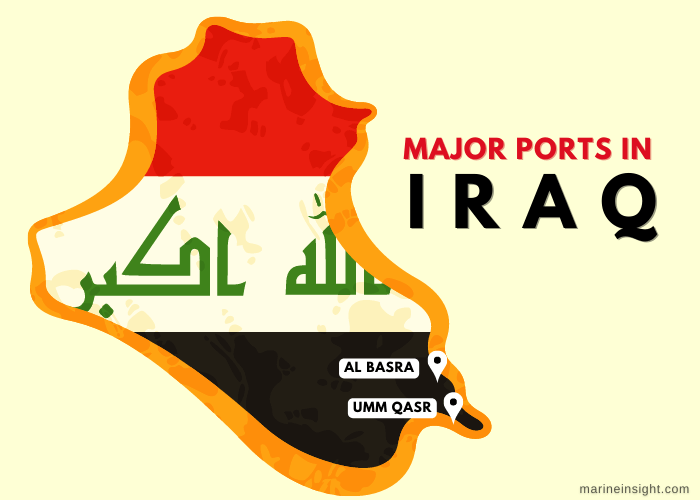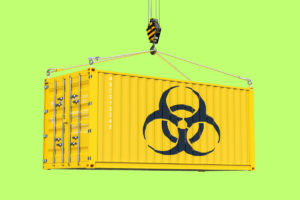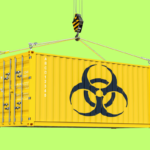5 Major Ports In Iraq
Positioned in West Asia, Iraq is a decent economy with enormous potential. The dominant industry in Iraq is the oil export sector which is also the major contributor to the country’s GDP by bringing in valuable foreign exchange.
Oil export from Iraq is mainly done from its ports which are an important component of the country’s economy. This is why, even amidst political strife, Iraq has undertaken many port development and expansion projects to strengthen its maritime sector.
However, Iraq’s sole reliance on its oil industry has led to the sidelining of the other sectors. This has generated the problem of unemployment in the country, with around 25-30% population, struggling to get decent work.
Owned by the Iraqi Government, the General Company for Ports Of Iraq is responsible for managing and operating the ports in the country. This body was established in 1919 and comes under the Ministry of Transport.
Umm Qasr Port
Situated at Iraq’s Gulf Coast, Umm Qasr is the main seaport of Iraq and also the only deep-water port of the country. It handles the majority of the country’s export trade. This port comprises three different port zones namely- Umm Qasr South Port, North Port and Umm Qasr Mid port.
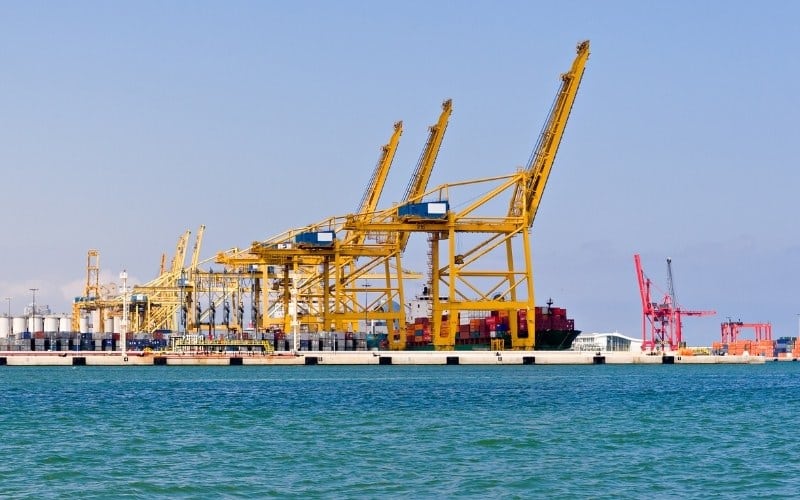
All these three ports have different port management authorities and numerous operators handle the port operations such as loading and unloading goods, providing storage space, renting warehouses etc.
The Port has 21 berths measuring around 5000m. It is quite expansive and is connected to major oilfields in the south of Iraq.
It is a multi-purpose port and can take care of diverse cargo such as liquid and dry bulk cargo, containerised cargo and also general cargo. The port also has a bank and a logistics depot.
The Umm Qasr port can handle ships weighing about 5000 TEU. About 90 vessels visit this port in a month and it handles 50,000 TEU container traffic per month.
The port has the latest equipment such as 8 container gantries, 9 mobile cranes with a total capacity of 100 tonnes, reach stackers, 12 trailers, 2 transtrainers and a forklift.
South Port
Built in the 1940s, the Umm Qasr South Port is the oldest. It only provides storage facilities for containers. In the case of private cargo, all the equipment is offered by private companies operating at the port.
The Iraqi Port Authority has established an electronic gate control mechanism for calling and stevedoring the ships. This system is operated from the control room and is highly efficient. It has led to more safety in port operations and contributed to increasing the port’s productivity.
The South port has 9 berths. Berth number 1 is operated by the government and is used for the transport of military equipment. The 2nd -6th berth handles bulk goods and general cargo. The 8th berth is solely used for containers. Lastly, berth 9 handles liquid bulk.
At this port, bagged cargo is directly loaded into trucks. Gulftainer and CMA CGM deal with containers while the Iraqi Port Authority deals with bulk and general cargo.
North Port
North Umm Qasr port was built in the 1970s and since then it has become the busiest port in Iraq. It is a multipurpose port, capable of handling Bulk Cargo, containerised cargo as well as Ro-Ro.
The Port has 14 berths, the majority of which are operated by private operating companies. The port faces congestion as numerous trucks have to wait for entering the port while others for getting clearance for imported cargo. This disturbs the port operations and is a problem that the port authorities have been trying to rectify.
However, North Port boasts of systematic and organized container yards and storage spaces. The north port contains the Gulftainer Terminal, Basra Multipurpose Terminal, The Gateway Terminal of Basra and also Umm Qasr Logistics Centre.
Recently, the North port has been linked to the railways. This has connected the port to the capital city Baghdad. Goods can be transported by the railway at only half the cost charged by trucks.
Berth number 10 is owned by the Ministry of Trade and contains silos for storing grains. Berth 11 connects to Umm Qasr logistics depot which also has cold storage facilities. Berth 12-15 serve the Basra Oil Terminal and Berth 16-18 are operated by Iraqi Port Authorities, Berth 19-22 and Berth 27, serve the Basra Gateway Terminal.
The Gulftainer Terminal is located at berth 11. Here container goods are loaded and unloaded using shore gantries and cranes. The major shipping line is at Maersk and the container yard has reefer points.
Umm Qasr Logistics Centre operates as a dry port and is owned by the Gulftainer Group. It also uses berth 11 for loading and unloading operations. It offers services such as storage for containers, warehouse space, cold storage space. This port has a clearing agency and customs department. It also offers office space on rent to companies operating at the main Umm Qasr Port.
Basra Multipurpose Terminal utilises berths 12-15 for containers and general bulk cargo. It has six mobile cranes along with reefer points. The terminal has 8 storage warehouses which are about 7000m2 each. These warehouses are currently operational and work at full capacity.
Basra Gateway Terminal started its operations in 2017, on the newly built berth 27. Currently, it uses berths 19-21 for shifting container goods from vessels to the shore by shore gantries and cranes. However, only Ro-Ro vessels are welcomed at berth 21. Warehouses at berth 21 do not operate at their maximum capacity.
Umm Qasr Mid Port
It handles multipurpose cargo.
Port of Basra/ Al-Maqal Port
The Al Maqal Port also known as the Port of Basra is located in Basra city, near the Persian Gulf. The port was opened in 1919 by the British when they occupied the region of Mesopotamia.
However, the port was partially destroyed during the Iran-Iraq war, when it was hit by Iran’s missiles. The port’s operations decreased till 2003 and it was later reopened after some repair. But still, it is not widely used.
It is not a busy port and handles minor cargo. The Hutchinson Container terminal operates at berth 14, to load and unload cargo using mobile cranes.
The Shatt al Arab river shore hasn’t been dredged for three decades which is why the draught capacity of the port has been reduced to 5 meters. Hence, the port can take only small ships and containers.
The port has 15 berths whose length is 3000m. The berths 1-8 are not currently operational and are filled with defunct equipment such as cranes and old ships. However, small trading operations are undertaken at the eastern side of the port.
The port has storage space and warehouses which are in decent condition. Berth 9 has a huge warehouse, used by Red Cross till 2017.
The port can handle vessels weighing about 5000 tonnes, with a total capacity of 600 TEU. The port has been rather deserted since 2017. It used to be a busy port till 2015 when it handled imports of cement and saw 100 ships every month. But now, even the railways connecting the port to important cities are not functional.
The port doesn’t have much equipment. It only has one mobile crane with a capacity of 65 tonnes, one reach stacker with a capacity of 50 tonnes, and two forklifts that can lift 5 tonnes at once.
The port has 15,000 sq m of storage space and 55 reefer points. Ro-Ro facility is not provided at the port. Bulk cargo can be taken care of using forklifts, available at the Container Terminal. Also, 10,000m2 warehouse space is available at the main terminal.
Al Basra Oil Terminal
The Al Basra Oil Terminal is situated in the Persian Gulf, just 31 miles southeast of the Al Faw Port. It is a deep-sea crude oil exporting terminal which is pivotal for the growth of the Iraqi economy as it exports about 80% of the country’s GDP.
Crude oil from oilfields in southern Iraq is transferred via pipelines to this terminal. It can handle 3 million barrels of crude oil every day when all its four tanker berths work at their maximum capacity.
This terminal has two platforms called A and B. Both of them have two berths each, for loading. Berth 1 and 2 of platform A and Berth 4 of B can handle oil tankers weighing around 350,000 DWT.
Berth 3 can accommodate tankers with a weight of 90,000-350,000 DWT. Recently two SPM’s have become operational. They can handle VLCC tanks.
Khor Al Amaya Oil Terminal
Khor Al Amaya Oil Terminal is situated southeast of the Shatt Al Arab River. It receives commercial shipping vessels and is a deep-sea crude oil terminal. It also has a helipad and mooring facility.
It became operational in 1963. At that time, it had only 1 platform called platform A which had two berths- 5 and 6. These two berths can handle tankers weighing 65,000 DWT. Currently, these two berths are not operational.
In 1974, another platform called B was built, having berths 7 and 8. These two berths can handle tankers weighing 330,000 DWT and operate at a capacity of 200,000 to 300,000bbls/day.
The terminal was in the phase of expansion when it suffered damage during Iraq-Iran War and later during Operation Desert Storm. After that restoration was carried out but the terminal was not able to operate at its maximum capacity of 0.7MMBPD.
Currently, platform A still needs to go under some repair. 3 pipelines link this terminal to the oilfields but they are completely rusted and cannot be used. Also, the deck suffered from a fire and some parts are also rusted completely. Repair and maintenance work began in 1993 but the terminal is not operational since 2017 as the nearby sea lines are damaged and suffered leakages.
Abu Flous Port
The Abu Flous is a commercial port and deals with general cargo. It is a minor port on the western bank of the Shatt al Arab river. It is near the border of Iran and is connected by roads to the city of Basra.
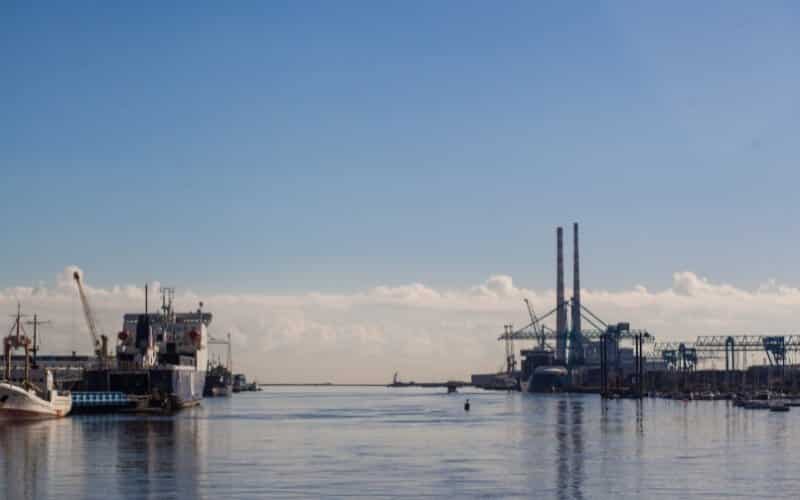
The port has three quays, each 75 m long and 18 m wide. The length of the port is around 520 m. There are 9 forklifts, three operating at each quay. Their capacity is 5 tons each. The port also has a lighting tower and usually receives small ships and minor cargo laden boats.
Al Faw Port
The Grand Al Faw port is currently undergoing expansion. Once completed, it would be the biggest port in the Middle East and play a major role in the Iraqi economy.
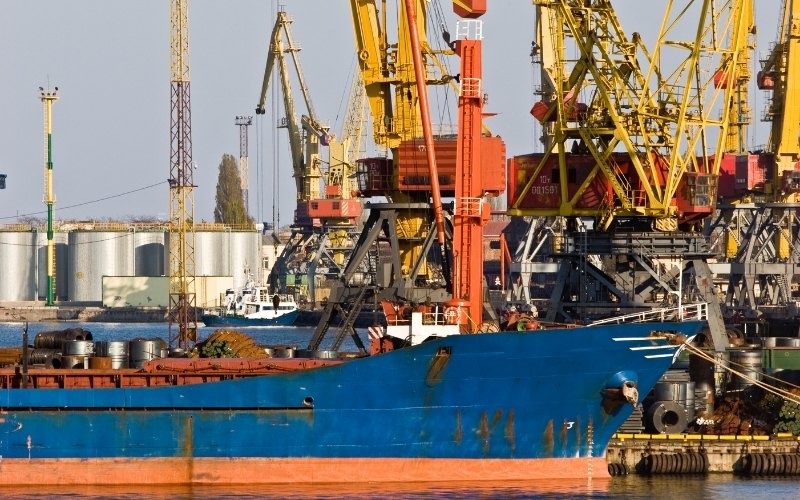
The port would be situated at the mouth of the Shatt Al Arab River. The project commenced in 2010 but the first stage has been completed. Five docks have been built and work is underway to construct the largest subsea tunnel and also road links to Basra. It is estimated that the sea tunnel would be completed in the next four years.
The last phase would involve the construction of 100 berths. It is estimated that if the expansion work progresses as planned, then by 2028, the port would be able to handle 36 million tonnes of container cargo and 22 million tons of dry bulk cargo.
The port would be able to accommodate the biggest ships as the dock would be 7 km long and the shore depth would be 18 meters. This port project is crucial for Iraq to expand its maritime operations with the world.
Port Of Khor Al Zubair
Khor Al Zubair Port is situated near the port of Umm Qasr. The port handles exports of gas condensates and it receives oil products, construction equipment, electrical goods and packed food.
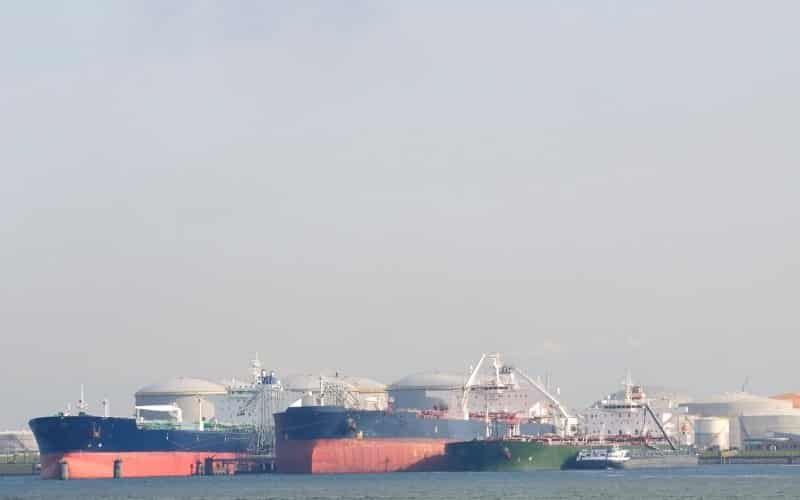
The port deals with 400,000 tonnes of cargo and 1,440,000 tonnes of fuel oil every year. It can accommodate ships weighing about 30,000DWT.
In 2020, Iraqi authorities revealed the conversion of this commercial port into an oil port. For this purpose, six new berths are under construction at the port.
The ports of Iraq are extremely important for the country’s economy. The government is expanding and refurbishing many of its ports as they attract much needed foreign investment and generate employment opportunities for the population of the country.
This revenue generated from maritime trade would aid in the development of the country which has seen many wars in recent decades.
You might also like to read:
- 5 Major Ports Of Vietnam
- 10 Major Ports in Romania
- 9 Major Ports In Bangladesh
- 8 Major Ports In Pakistan
- Major Ports of Gambia
- 3 Major Ports of Angola
Disclaimer: The authors’ views expressed in this article do not necessarily reflect the views of Marine Insight. Data and charts, if used, in the article have been sourced from available information and have not been authenticated by any statutory authority. The author and Marine Insight do not claim it to be accurate nor accept any responsibility for the same. The views constitute only the opinions and do not constitute any guidelines or recommendations on any course of action to be followed by the reader.
The article or images cannot be reproduced, copied, shared or used in any form without the permission of the author and Marine Insight.
Do you have info to share with us ? Suggest a correction
Latest Maritime law Articles You Would Like:
Latest News
- What are Logistics Risks?
- How Port and Terminal Operators Can Control Emissions?
- Minimum Quantity Commitment (MQC) and Liquidated Damages in Container Shipping: Concept and Relevance
- MARPOL (The International Convention for Prevention of Marine Pollution For Ships): The Ultimate Guide
- The Ultimate Shipping Container Dimensions Guide
- A Comprehensive Overview of IMDG Code for Shipping Dangerous Goods
Subscribe To Our Newsletters
By subscribing, you agree to our Privacy Policy and may receive occasional deal communications; you can unsubscribe anytime.



